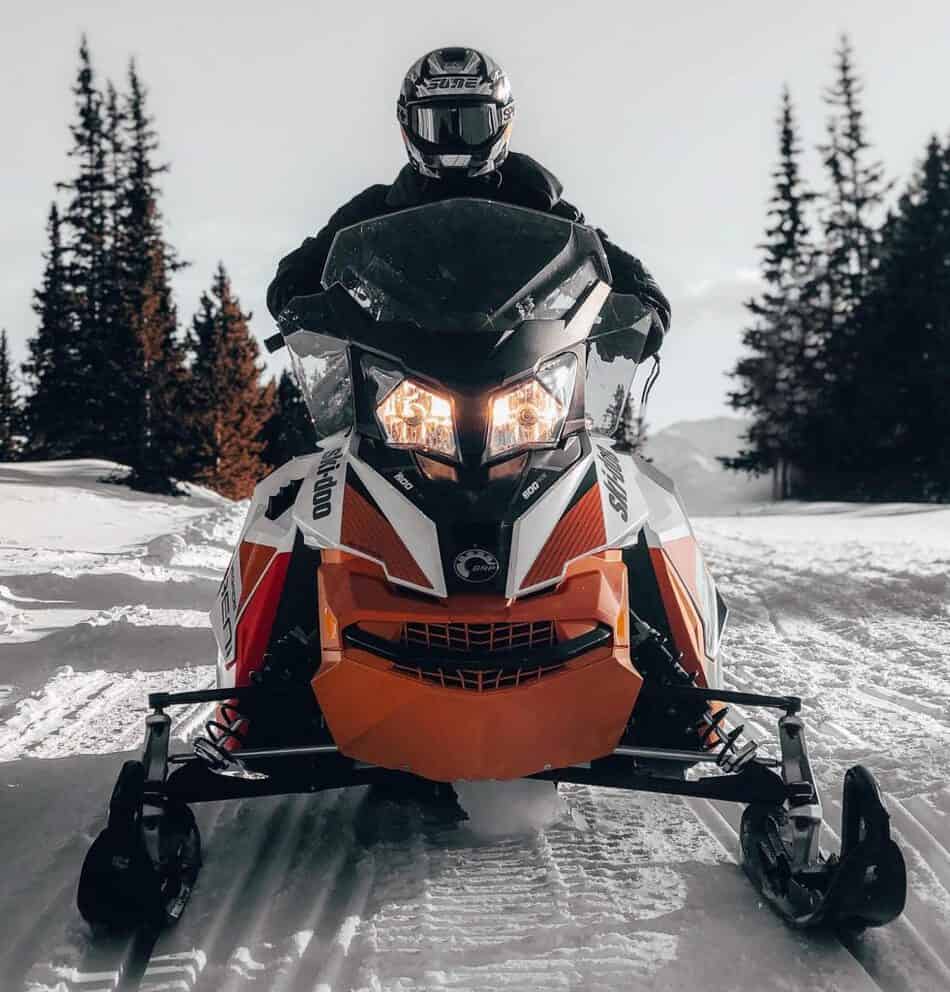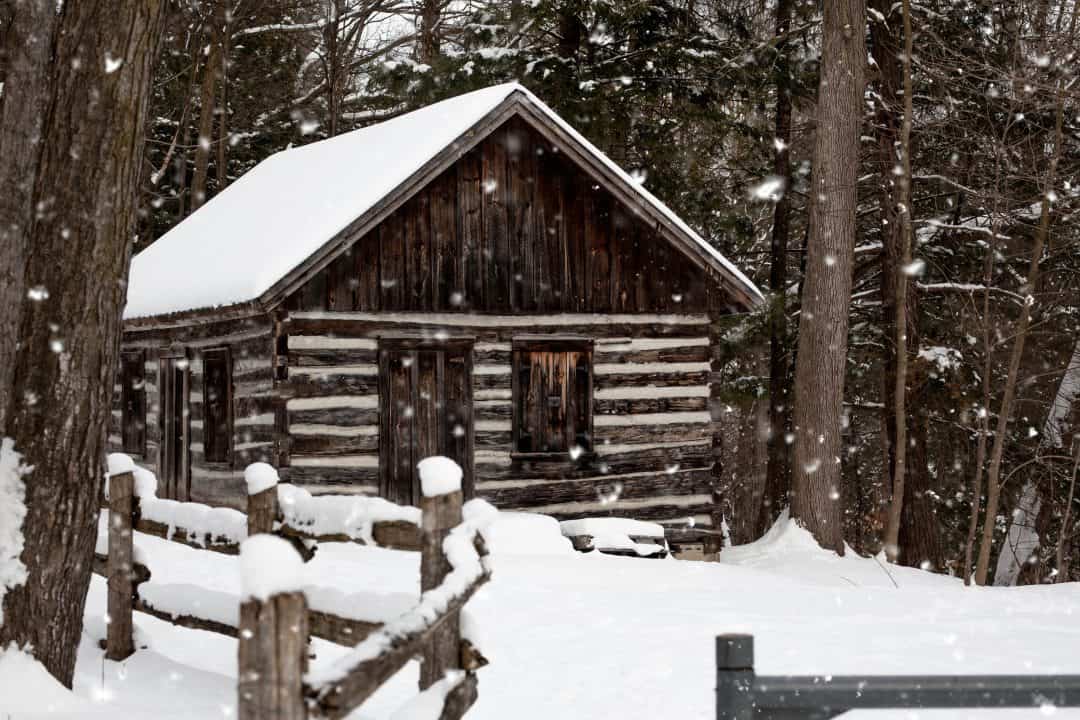Before you leave your cabin for winter there’s a handful of important things that need to get done.
Winterizing your cabin is a very important part in the maintenance of your home.
It’s important to protect your investment by locking it up properly before you leave for the winter.
Winterization is important to ensure that the harsh winter conditions don’t damage your cabin. The cold can cause harm in many ways such as through your plumbing.
It can be easy to forget certain procedures. There is quite a lot of things that need to be done after all.
Lucky for you, I’ve created a checklist of things which you’ll need to make part of your winterization process. It’s time to prepare your home for winter.
Outside Winterization Duties
Store and lockup equipment: You should clean equipment and lock it away before you leave your cabin. This involves anything worth anything significant. For example, automobiles, building and solar equipment. You want to make sure that nothing is stolen whilst you’re away. Petty thieves will take anything worth taking. Whilst you’re away, your cabin is vulnerable so it’s a very wise idea to make your valuables hard to get to.
Identify and fix leaks: Inspect the whole cabin, looking for any air leaks. Any holes or gaps you find; you should seal with insulator or caulk. This will ensure that pests don’t wreak havoc on your cabin in your absence. Sealing up gaps will also prevent the cold air and other elements from getting in.
Mow the Lawn: Though not incredibly important, it’s always a good idea to freshen up your lawn one last time. This will just make your job a bit easier when you return to your cabin. Do everything you can now, to make your life easier in the future. I’ll always make sure my cabins in tip-top shape before I leave for winter. If you have the time, why not?
Insulate your plumbing: Before you leave your cabin for the winter, you should insulate your plumbing. There are numerous dangers of leaving your pipes uninsulated during the winter. The pipes could freeze and burst, leading to a variety of other problems such as flooding. You can insulate your pipes in crawl spaces with heat tape. Simply wrap the tape around the pipes. Alternatively, you could use strips of pipe wrap or foam pipe sleeves.
I’d recommend Pipe Guard Tape; you can check it out on Amazon by Clicking Here.
Bring in outdoor furniture: If it’s likely to snow where your cabin is located, it would be a good idea to bring your outdoor furniture inside. Chairs should at least be stacked or folded. You also want to keep your furniture safe from wildlife. rodents and pests could also damage your furniture whilst your away if you don’t lock them away.
Clean out the gutters: You should carry out maintenance on your cabins roof. This involves cleaning out the gutters. A clogged gutter can cause your roof to leak and therefore water damage to your cabin. Whilst you’re up there look for any signs of damage or leaks.
You don’t necessarily need any special equipment to clean out your gutter however a Gutter Cleaning Spoon will help a lot. I’d recommend the Gutter Tool from amazon, Click Here to check the price.
Inside Winterization Duties
Put mothballs with your clothes: You should place mothballs with any left behind clothes. This will prevent you coming back to your cabin and finding that your clothes all have a ton little moth holes in them. You can purchase mothballs from Amazon, I like using these Cedar Balls.
Pull your curtains or blinds: You’ll want to ensure that your furniture is not left in direct sunlight. The sun can bleach furniture and loose color. If you don’t have curtains or blinds, simply cover the furniture with a sheet.
Bring perishable food with you: When leaving your cabin for winter it’s important that you bring any food prone that can turn rotten along with you. If food rots whilst your gone, your cabin will be filled with a revolting smell. This smell could then attract unwanted visitors such as rodents, insects and other sorts of wildlife. Any other food left behind should be stored in food storage containers.
Clean out the trash: Similarly, to the previous tip, part of winterizing a cabin includes tidying up and making sure there’s no mess to attract unwanted visitors. Also, it’d be extremely unhygienic to leave dirty trash around whilst you’re gone.
Close your fireplace’s damper: The procedure may vary depending on your fireplace, hopefully you are already aware of how to close your fireplace’s damper. Though for most fireplaces there will be a handle which you lift. This is part of winterizing a cabin as we don’t want insects to get into your cabin through the fireplace.
Use Antifreeze: A neat little trick that all cabin owners should be aware of is the use of RV Antifreeze. You can pour Antifreeze into all your drains and sinks. This will help stop your pipes and plumbing from freezing during the cold temperatures.
Unplug appliances: You should unplug all the appliances in your cabin. Some appliances will use some power if they’re plugged in, even when not in-use. This makes it a good idea to unplug everything. You could end up saving a few dollars. Also, there’s always a chance that a faulty wire could lead to a fire whilst you’re away.
Secure the cabin: You don’t want someone moving into your cabin after you move out. Lock up your cabin and make sure all entry points are fully secured. Make sure all doors and locked, all valuables should be locked away and all blinds/curtains should be shut so none can look in. I have a guide in which I explain my simple and inexpensive cabin security system.
Get a Cabin Babysitter

An unpopular solution is having a friend or family member look after your cabin whilst you’re away. Perhaps you know someone who would love to live in your cabin whilst you’re away. In return, you can pay for the bills and utilities.
This isn’t something that happens very often, but I know of a few people who do this. In fact, even I’ve leant my cabin out to a friend and his wife who wanted to get away for the winter. They were more than happy to keep my cabin warm whilst I was gone and even offered to pay the utilities (though, I didn’t let them).
This kind of arrangement works great for both parties. You don’t have to worry about your cabin whilst you’re away and they get a free cabin for the meantime.
Even if you don’t want to be living in a cabin throughout the winter, someone else might. In fact, there’s a load of things that you can do. I have a guide in which I discuss my favorite snow activities, perfect for a cabin. You can find that guide by Clicking Here.

Checklist
You can print off this page or summarize it yourself and use it as a checklist. A checklist will ensure that you don’t miss out any important parts of the winterization process. It’s very easy to forget important steps when you have so many things to worry about. It’s always good to have a routine that you can stick too.
Conclusion
If you carry out every task mentioned in this guide, your cabin should be safe throughout the winter.
Though, you should also use your own diligence to make sure your cabins safe.
If you know your cabin has a rodent problem, then you may want to set-up some traps. I have a guide in which I discuss the best animal traps, you can check it out by Clicking Here.
Same goes for insects, if you know you have a problem then be extra careful and set-up a load of traps before you go. A strong insect barrier should do the trick.
I hope you’ve taken everything into consideration and you’re now prepared to lock down your cabin. If you’ve got any feedback or ideas you’d like to share to the rest of the community, feel free to leave a comment down below.
My name is Eugene Thornhill. I'm an outdoor enthusiast who loves nothing more than being one with nature. I've lived in numerous outdoor homes and even constructed my own. Living off-grid is something I'm very familiar with, more so than living in the city. For many years I've dealt with the many problems of living off-grid. It's time to pass on my knowledge through Cabinguides.


